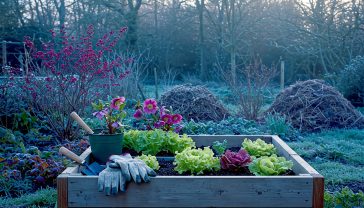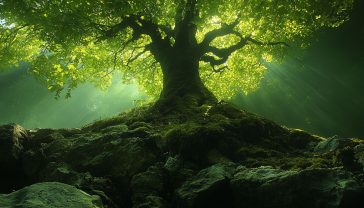5 Crucial Things to Consider When Buying a Compost Bin
Your complete guide to choosing the perfect compost bin in the UK. We explore the 5 key factors to consider before you buy, from size to material.

This post may contain affiliate links. If you make a purchase through these links, we may earn a commission at no additional cost to you.
Let’s be honest, the weekly bin dance is a familiar ritual. You’ve squashed, squeezed, and balanced that precarious Jenga tower of rubbish, hoping the lid closes just enough to avoid the wrath of the bin collectors. But what if a huge chunk of that waste—up to a third of it, in fact—could be magically transformed into something incredibly valuable for your garden, for free?
That’s not magic; it’s composting. It’s the quiet, unsung hero of the British garden, a tradition stretching from grand stately homes to the cherished allotments that dot our landscape. It’s the process of turning your everyday kitchen scraps—potato peelings, tea bags, apple cores—and garden waste into a rich, dark, crumbly superfood for your plants, affectionately known as ‘black gold’.
Choosing to compost is more than just a smart move for your garden. It’s a powerful statement. You’re reducing the amount of waste sent to landfill, where it would otherwise release harmful greenhouse gases. You’re cutting down on the need for peat-based, store-bought composts, which helps protect our precious peatlands. And you’re creating a thriving ecosystem in your own back garden, all from stuff you were about to throw away.
But before you can start this wonderful journey, you need the right vessel. The world of compost bins can seem a bit bewildering at first. From plastic ‘Daleks’ to rotating tumblers and fancy hot bins, the choice is vast. That’s why we’ve created the definitive guide. We’ll walk you through the five crucial things to consider when buying a compost bin, ensuring you find the perfect partner for your home, garden, and lifestyle.
Before the Bin: A Super-Simple Guide to What Composting Actually Is
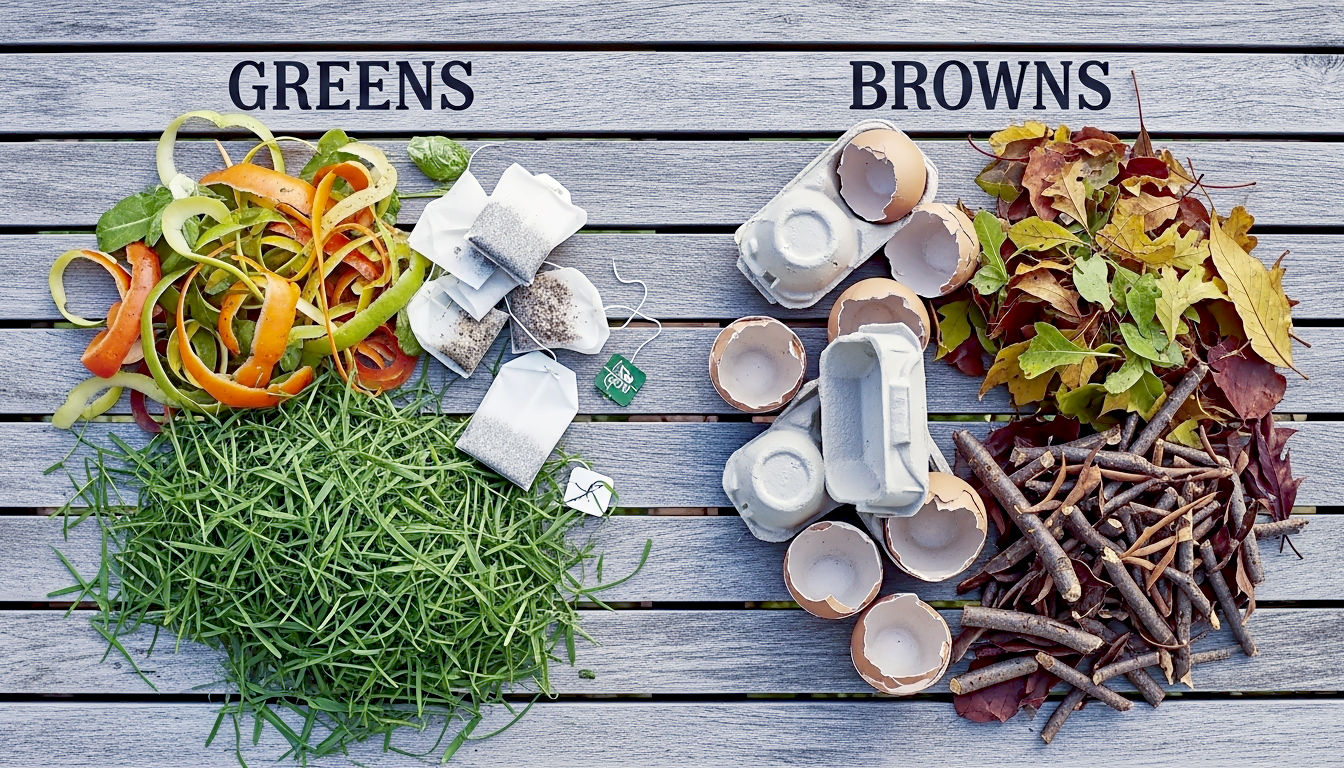
Before we dive into the different types of bins, let’s quickly get our heads around what’s happening inside one. Think of composting as making a lasagna. You need the right layers of ingredients for it to cook perfectly. In the world of compost, our ingredients are simply divided into two camps: ‘Greens’ and ‘Browns’.
The Recipe for Success: Getting Your ‘Greens’ and ‘Browns’ Right
This is the golden rule of composting. Getting the balance right is the key to creating beautiful compost quickly and without any nasty smells.
- GREEN Materials (The Wet, Nitrogen-Rich Stuff): These are the fresh, moist ingredients that provide nitrogen and kickstart the heating process. Think of them as the engine of your compost pile.
- Fruit and vegetable peelings
- Grass cuttings
- Coffee grounds and used tea bags (check if they’re plastic-free!)
- Young, leafy weeds (before they set seed)
- Chicken, rabbit, or guinea pig manure
- BROWN Materials (The Dry, Carbon-Rich Stuff): These are the dry, woody materials that provide carbon. They give the compost structure, create air pockets so it can breathe, and prevent it from becoming a slimy mess.
- Cardboard (torn up, with tape removed)
- Egg boxes
- Toilet roll tubes
- Fallen leaves
- Straw or hay
- Wood chippings or sawdust
- Crushed eggshells
The ideal mix is roughly one part ‘greens’ to two or three parts ‘browns’ by volume. Don’t get too hung up on measuring it perfectly. A good rule of thumb is to add a layer of browns every time you add a bucket of kitchen scraps or a load of grass clippings.
Meet the Microscopic Workforce
When you layer these greens and browns, you’re essentially creating a five-star hotel for an army of microscopic workers. Bacteria, fungi, worms, and other tiny organisms move in and get to work, feasting on the waste. As they eat, they generate heat, which breaks everything down into the simple, nutrient-rich substance we call compost. All they ask for in return is food (your waste), air, and a little moisture. Your compost bin is the house you provide for them to do their job.
Consideration 1: Size and Capacity – How Much Muck Do You Make?
The first and most fundamental question is: how big should your bin be? Get one that’s too small, and you’ll quickly run out of space. Get one that’s too big, and you might struggle to fill it, which can slow down the composting process.
Doing the Maths: Calculating Your Household’s Needs
Your ideal bin size depends on two things: the size of your household and the size of your garden.
- For Kitchen Waste: A typical family of four produces about 5-10 litres of compostable kitchen waste per week.
- For Garden Waste: This is the big variable. A tiny courtyard garden might only produce a few handfuls of weeds, while a large lawn and several flowerbeds could generate multiple bags of grass cuttings and clippings in a single weekend.
Here’s a rough guide to help you choose a capacity:
| Household/Garden Size | Recommended Bin Size (Litres) | What This Looks Like |
|---|---|---|
| 1-2 people, small balcony or patio garden | 100 – 200 Litres | A small tumbler, a wormery, or a compact stationary bin. |
| 2-4 people, small-to-medium garden with lawn | 200 – 330 Litres | The classic ‘Dalek’ bin provided by many councils. |
| 4+ people, medium-to-large garden, keen gardener | 330 – 500+ Litres | A large stationary bin, or better yet, a system of two or three bins. |
Top Tip: If you have the space, always consider a two or three-bin system. This is the gold standard for continuous composting. You have one bin that you are actively filling, one bin that is “cooking” or maturing, and a third bay for your finished compost, ready to use.
Consideration 2: The Right Type of Bin for Your Lifestyle
This is where things get interesting. Compost bins are not a one-size-fits-all solution. The best type for you will depend on your budget, how much space you have, and how quickly you want to get your finished compost.
The Traditionalist: The Stationary Plastic or ‘Dalek’ Bin
This is the one you’ll see in most British gardens. Often shaped like a cone with the top cut off (hence the nickname ‘Dalek’), these bins are simple, affordable, and effective. Many local councils offer them at a subsidised price.

Outdoor Garden Compost Bin 220L, Strata GN332 Cylindrical Composter with Hatch Door

Oipps Invopak 220L Recycled Plastic Garden Composter Bin with Hatch & Windproof Lid Ready To Use – Green
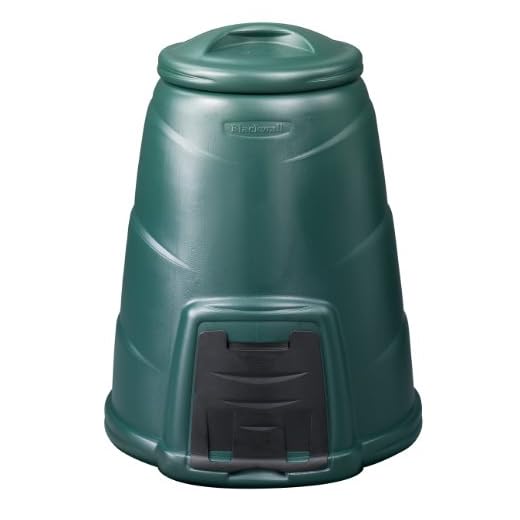
Blackwall Compost Converter (330 Litre, Green)
- How it works: You add material to the top, and over 6-12 months, it slowly breaks down. You can then harvest the finished compost from a small hatch at the bottom.
- Pros:
- Affordable and widely available.
- The enclosed design retains heat and moisture well.
- Keeps pests out more effectively than an open pile.
- Cons:
- Turning the contents to aerate it can be tricky (it involves lifting the whole bin off or using a special tool).
- Harvesting from the small bottom hatch can be awkward.
- Best for: Most beginner composters with a small to medium-sized garden. It’s a brilliant, no-fuss starting point.
The Tumbler: For Those Who Want Compost in a Hurry
A compost tumbler is a sealed drum mounted on an axle or base that you can rotate. The big selling point is speed and convenience.

Outsunny 160L Tumbling Compost Bin Outdoor Dual Chamber 360° Rotating Composter, Garden Compost Bin w/Sliding Doors & Solid Steel Frame, Blue

Dripex Tumbling Compost Bin 160L, Dual Chamber Rotating Composter, Compost Tumbler Tumbling Composter, BPA Free, Create Fertile Soil, Aerating Compost…
![HOZELOCK - Easymix 2-in-1 Composter: Rotating Composter with 100 Litre Capacity. Mixing 3x Faster than Standard Composters (8 Weeks), Compost Juice Collection Container [4001 0000]](https://m.media-amazon.com/images/I/41isumOz1xL._SS520_.jpg)
HOZELOCK – Easymix 2-in-1 Composter: Rotating Composter with 100 Litre Capacity. Mixing 3x Faster than Standard Composters (8 Weeks), Compost Juice…
- How it works: You fill the drum with your greens and browns, seal the lid, and give it a turn every few days. This mixing action introduces lots of air, which supercharges the decomposition process.
- Pros:
- Fast results: Can produce usable compost in as little as 3-4 weeks under ideal conditions.
- Easy to aerate: No forking required, just a simple turn of a handle.
- Fully sealed: Excellent for keeping out rodents and preventing smells. Great for urban gardens.
- Cons:
- More expensive than stationary bins.
- Batch-based: Once it’s full, you can’t add any more material until the batch is finished. This is why dual-chamber tumblers are very popular.
- Can be heavy to turn when full.
- Best for: Gardeners who want compost quickly, have a bit more to spend, and prefer a tidy, contained system.
The Naturalist: The Wooden Slatted Bin
For those who prefer a more natural aesthetic, a wooden compost bin is a fantastic choice. You can buy them as kits or, if you’re handy, build one yourself from old pallets.
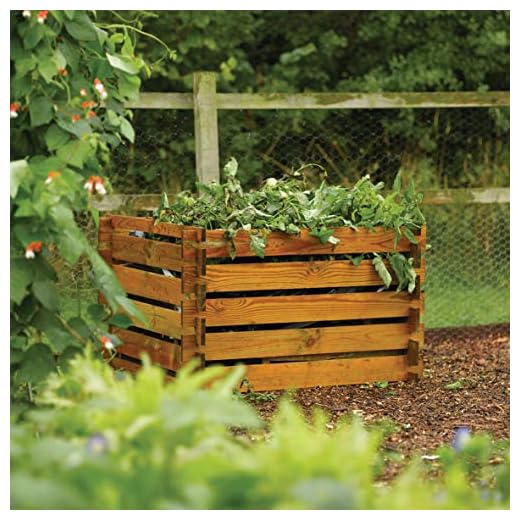
Rowlinson Budget Composter
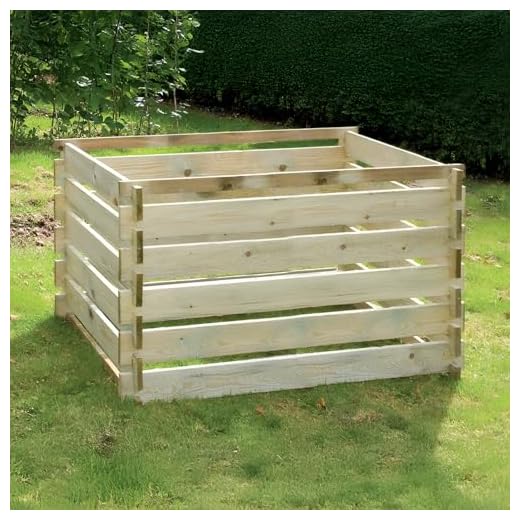
Lacewing Traditional Wooden Composter XL 1575 Litres Slatted Outdoor Garden Composter 150cm x 150cm
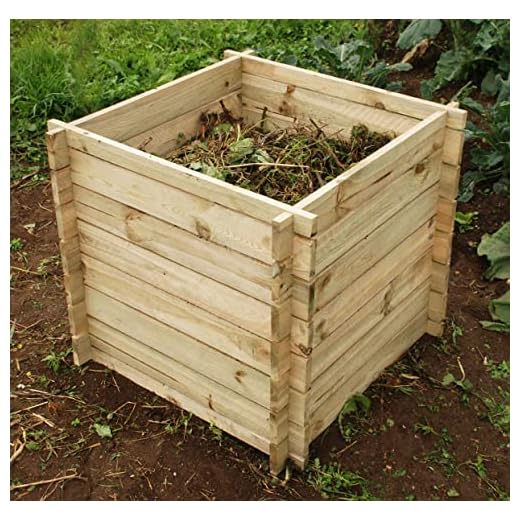
Lacewing Outdoor Wooden Compost Bin Small 373 Litres – Composter with Traditional Slated Design for Natural Garden Compost 73cm x 73cm
- How it works: These are typically open-topped bins with slatted sides. The gaps in the slats allow for good airflow. They work just like a simple compost pile but keep everything neat and contained.
- Pros:
- Looks attractive and blends into the garden.
- Excellent airflow, which is great for the compost.
- Easy access: You can easily get a fork in to turn the pile. Front slats are often removable for easy harvesting.
- Cons:
- Can dry out more quickly in sunny weather.
- Less effective at keeping rodents out unless you add wire mesh.
- Wood will eventually rot and need replacing (though this can take many years).
- Best for: Keen gardeners with larger gardens or allotments who want a multi-bin system and prefer a natural look.
The Urbanite: The Mighty Wormery (Vermicomposter)
Don’t have a garden? No problem! A wormery, or vermicomposter, is a compact system that uses special tiger worms to break down waste. It’s perfect for balconies, patios, sheds, or even kitchens.

UK Made Wormcity Wormery 4 Composting Trays (100 Litre Size) Black – INCLUDES 500g Worms, Coir Bedding and Worm Food
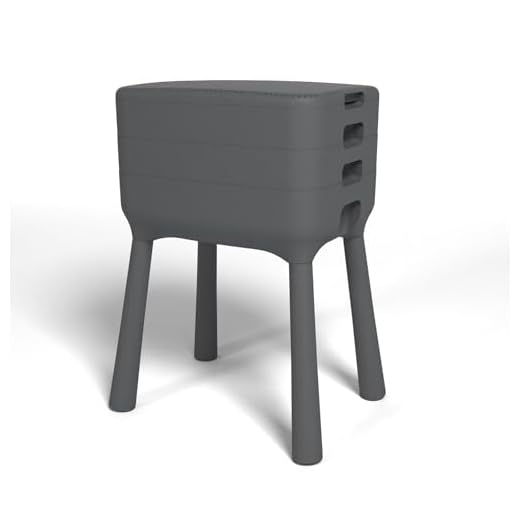
simpa Worm Farm Compost Bin for Indoor Outdoor Food Waste Recycling (Worms Not Included) 70cm (H) x 53cm (W) x 39cm (D)
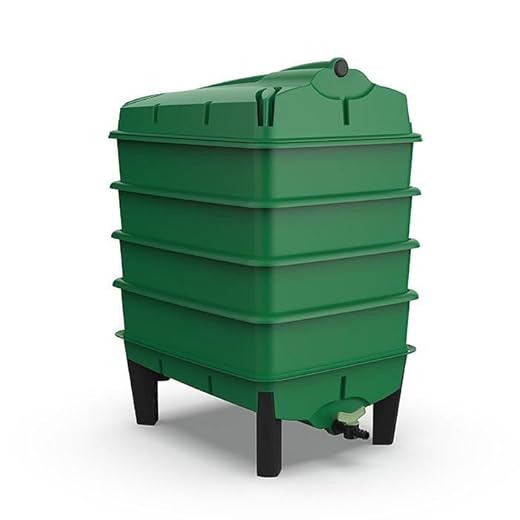
Tiger Wormery – Worm Composter INCLUDING 250g Worms – Designed and Made in the UK
- How it works: It’s a set of stacking trays. You add kitchen scraps to the top tray along with the worms. They eat the waste and produce ‘vermicompost’ (incredibly rich worm castings) and a concentrated liquid fertiliser called ‘worm tea’ that collects in a tap at the bottom.
- Pros:
- Perfect for small spaces with no garden.
- Produces some of the highest quality compost and a liquid feed.
- Odourless when managed correctly.
- Cons:
- Can only process kitchen scraps, not bulky garden waste.
- Sensitive to temperature—needs protection from frost and extreme heat.
- Can’t handle citrus, onions, or garlic in large quantities.
- Best for: Flat-dwellers, households with no garden, or anyone wanting a top-tier fertiliser for their houseplants and pots.
The High-Tech Gardener: The Hot Bin Composter
These are the Rolls-Royce of compost bins. Hot bins are insulated containers designed to reach high temperatures (40-60°C) all year round, even in a chilly British winter.
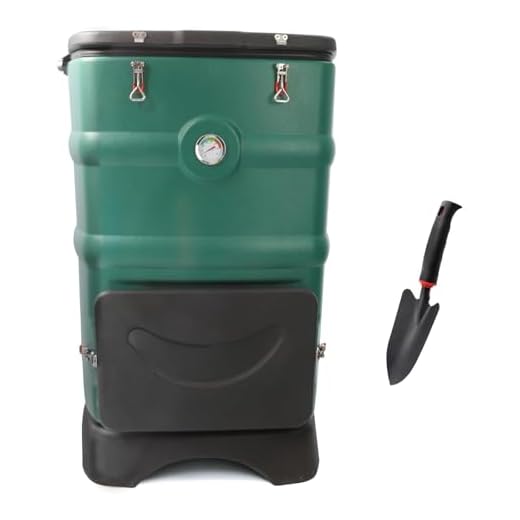
Insulated Compost Bin with Ventilation System – Quickly Composting All Year Round,A Reservoir at The Bottom Design to Collect The Leachat (Green)

261L Thermal Composter, Double-Layer Design, Adjustable Inlets and Liquid Collection System,Hot Composter Ideal for Cold Climates and Winter Composting for…

Neudorff 775 Thermo Composter 530 L DuoTherm
- How it works: The thick insulating walls trap the heat generated by the composting microbes. This high temperature breaks down waste incredibly quickly and allows you to compost a wider range of materials.
- Pros:
- Extremely fast: Can produce compost in 30-90 days.
- Composts more types of waste, including cooked food, small bones, and pet waste (check manufacturer’s guidelines).
- The heat kills weed seeds and pathogens.
- Cons:
- Very expensive, a significant investment.
- Requires a more careful balance of ingredients to keep the temperature up.
- Best for: Serious gardeners, tech lovers, and those who want to compost as much of their household waste as possible, as quickly as possible.
Consideration 3: Material Matters – Plastic, Wood, or Metal?
The material your bin is made from affects its durability, performance, and appearance.
The Practical Choice: Recycled Plastic
Most compost bins in the UK are made from recycled plastic. It’s a sensible and popular choice for good reason.
- Pros: Lightweight, durable, weather-resistant, and an excellent insulator. It holds heat and moisture effectively, helping the composting process along.
- Cons: Can look a bit utilitarian. Over many years, UV light from the sun can make the plastic brittle.
- Look for: Bins made from 100% recycled post-consumer plastic for the most eco-friendly option.
The Aesthetic Choice: Natural Wood
Wooden bins are chosen primarily for their looks. They sit much more naturally in a garden setting.
- Pros: Aesthetically pleasing. Allows for great airflow.
- Cons: Heavier than plastic. Will eventually degrade. Can be more vulnerable to pests.
- Look for: Bins made from FSC-certified timber that has been pressure-treated to resist rot. Larch and cedar are particularly long-lasting choices.
The Industrial Option: Metal Bins
While less common, you can find compost bins made from galvanized steel.
- Pros: Extremely durable and completely rodent-proof.
- Cons: Can get very hot in direct sun and very cold in winter, which can affect the composting process. Often more expensive and can be prone to rust over time.
Consideration 4: Location, Location, Location – Siting Your Compost Bin
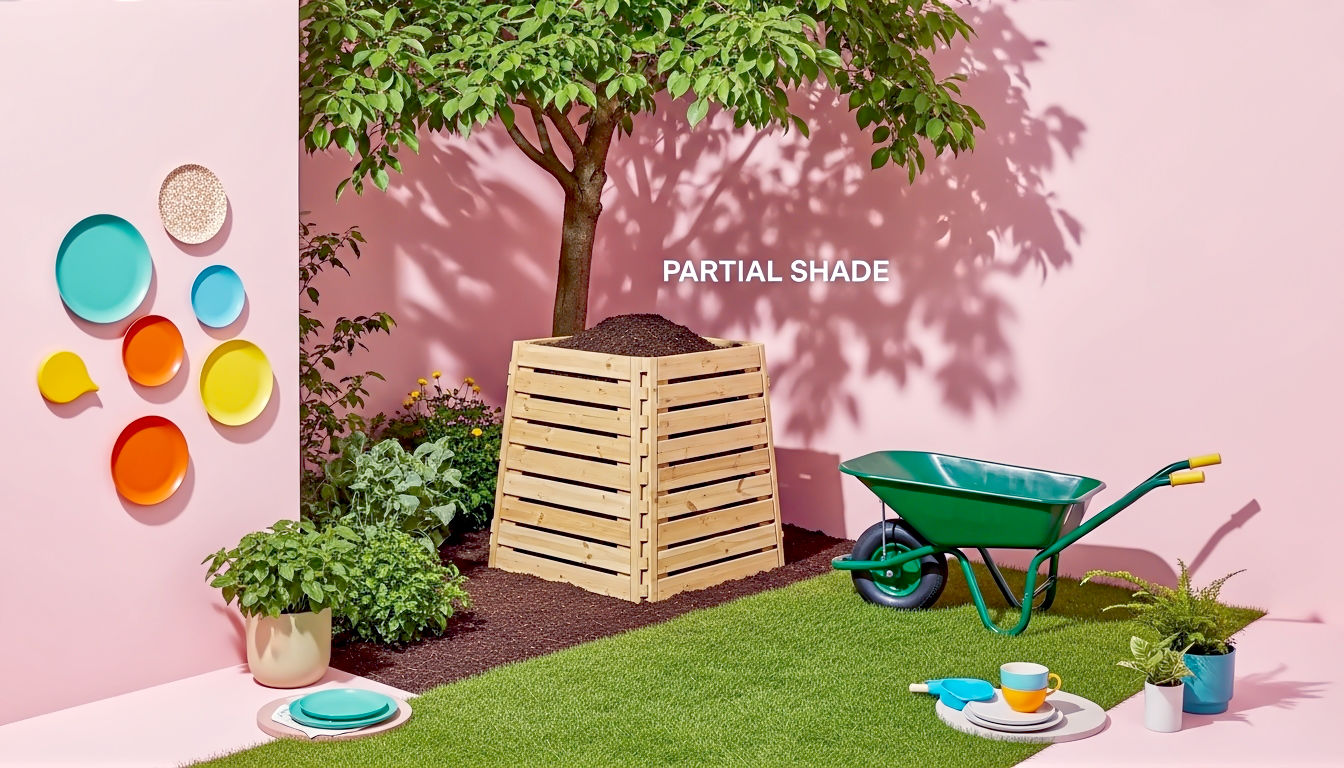
Where you put your bin is almost as important as the bin itself. A poorly placed bin can lead to a slow, smelly process that you’d rather ignore.
The Great Sun vs. Shade Debate
You’ll hear conflicting advice on this. Some say full sun helps heat the pile, while others say full shade stops it from drying out.
The best answer is a compromise: A spot with partial shade is often ideal. It will get some sun to warm it up but won’t bake and dry out completely in the height of summer. If you have to choose, a shadier spot is generally safer than a very hot, sunny one. A dry pile is a dead pile.
Practicalities: Access, Drainage, and Keeping the Neighbours Happy
- Access: Place it somewhere you can easily get to with a wheelbarrow. Remember you’ll be adding material regularly and need to get the finished compost out. Don’t hide it at the very bottom of the garden where it becomes a chore to visit.
- Surface: Place your bin directly on bare soil or grass if possible. This allows worms and other beneficial creatures to get in from the ground and helps with drainage. If you must place it on a hard surface like a patio, add a few spades of soil to the bottom to introduce those essential microorganisms.
- Water: It should be near a water source, like a water butt or hosepipe. Your compost pile needs to be damp like a wrung-out sponge, and you may need to water it during long, dry spells.
- Neighbours: While a well-managed bin shouldn’t smell, it’s just good manners to place it away from your neighbour’s seating area, washing line, or windows.
Consideration 5: Your Composting Goals – Are You a Casual Recycler or a Gardening Guru?
Finally, be honest with yourself about your ambitions and how much effort you’re prepared to put in. This will determine the method of composting you choose, which influences your choice of bin.
The Slow and Steady Approach: Cold Composting
This is the simplest method and what happens in most basic ‘Dalek’ or wooden bins.
- How it works: You simply add your waste as it’s generated and let nature take its course. The pile will heat up a little, but it won’t reach the high temperatures of hot composting.
- Effort Level: Very low. You just pile it up.
- Time: It’s slow, taking anywhere from 6 to 18 months to produce compost.
- Outcome: Good quality compost, but may contain dormant weed seeds.
The Fast and Furious Method: Hot Composting
This is a more active process designed to produce compost quickly. It’s best achieved in insulated hot bins or by building a large pile (at least 1 cubic metre) in a wooden bay system.
- How it works: You build the entire compost pile in one go, with the correct ratio of greens and browns, and keep it moist and well-aerated. The intense microbial activity creates temperatures of 55-65°C.
- Effort Level: High. It requires gathering materials, turning the pile regularly, and monitoring temperature and moisture.
- Time: Very fast, producing compost in 1-3 months.
- Outcome: Excellent, sterile compost with no weed seeds. This is the method for serious gardeners.
The Takeaway: There is no “wrong” way. If you’re a busy person who just wants to reduce waste, cold composting in a simple bin is perfect. If you’re a passionate gardener who wants high-quality compost as fast as possible, investing in a system that supports hot composting (like a hot bin or a large wooden system) is the way to go.
Getting Started: Your Composting Toolkit and What to Put In
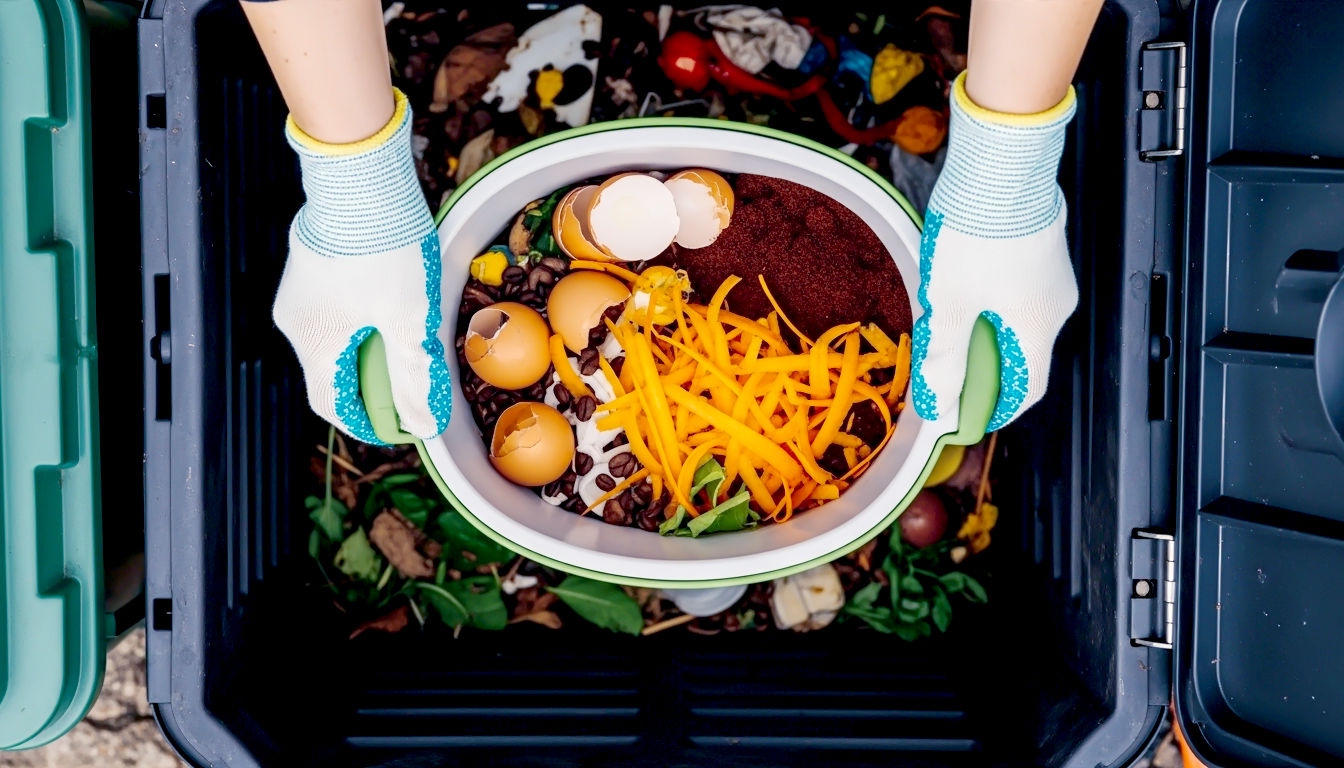
Once you’ve chosen your bin, you only need a few simple things to get going.
- Kitchen Caddy: A small, lidded bin to keep in your kitchen for collecting scraps.
- A Garden Fork or Aerator Tool: For turning and mixing your compost, which is vital for adding air.
- Gardening Gloves: For handling your finished product.
The Ultimate ‘Yes’ and ‘No’ Lists for Your Compost Bin
The ‘Yes’ List (Add Freely)
- Vegetable peelings
- Fruit waste
- Tea bags & coffee grounds
- Grass clippings (in thin layers)
- Shredded paper & cardboard
- Eggshells (crushed)
- Egg boxes
- Old flowers & houseplants
- Hedge clippings (chopped up)
- Straw & hay
- Pet bedding from herbivores (rabbits, hamsters)
The ‘No’ List (Keep Out at All Costs)
- Cooked food, meat, fish, or dairy: These will smell awful and attract rats. (The only exception is a sealed hot bin system).
- Cat or dog waste: Can contain harmful pathogens.
- Grease, oil, or fat: They slow down composting and cause smells.
- Diseased plants: You risk spreading the disease back into your garden.
- Pernicious weeds: Things like bindweed or couch grass can regrow from the compost.
- Coal or coke ash: Contains harmful chemicals.
- Glossy magazines: The shiny coating often contains plastics.
- Disposable nappies: No, just no.
Conclusion: Your Journey from Kitchen Scraps to Garden Gold Starts Now
Choosing a compost bin is the first exciting step on a truly rewarding journey. By thinking through these five key areas—Size, Type, Material, Location, and your own Goals—you can move beyond guesswork and find a system that fits seamlessly into your life.
Whether you opt for a simple ‘Dalek’ tucked behind the shed, a speedy tumbler on the patio, or a bustling wormery on the balcony, you’re doing something brilliant. You’re closing a loop, turning waste into wealth, and taking an active role in the health of your garden and the planet.
So go on, take the plunge. Your garden—and your wheelie bin—will thank you for it.
Further Reading
For more expert advice and detailed information, these resources are highly respected in the UK:
- The Royal Horticultural Society (RHS): Composting Advice
- Garden Organic: Composting Information
- WRAP (The Waste and Resources Action Programme): Creating and Using Compost



